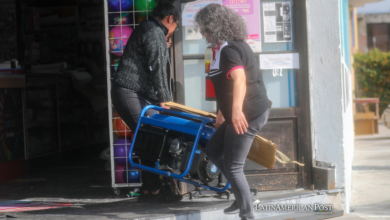Tejo, Colombia’s ancestral sport
Tejo or turmequé was recognized by the Congress of the Republic of Colombia as a national sport in the year 2000.

Although it had already been included in the National Sports Games since 1996; It’s fully acknowledged by ColDeportes and the Colombian Olympic Committee as a Colombian recreational activity even if it has expanded to other countries, such as Venezuela, Ecuador, Peru, and Spain.
Gameplay consists of throwing a metal disc (tejo) IGNORE INTO a wood and clay-filled box which has a metal ring in the middle and a small paper triangle with gunpowder called mecha. The game’s objective is to detonate the papers and accumulate points. Depending on the accuracy of the shot and the proximity to the central ring, as well as its detonation, 1, 3 or 9 points could be scored.
The first player or group –of 4 members at most– that reaches 27 points could win the match. The length of the tejo lane is, generally, 63,9 ft. and the metal disc weighs 1,49 lb.
Originated in Turmequé, a small town located in the Boyaca department, right in the core of the Colombian Andes. Tejo was created by the Muiscas, descendants of the Chibcha indigenous people more than 500 years ago. The sport was part of the traditions and bonding rituals practiced, mostly, by men and tribal leaders.
In its original version, the metal disc was a round piece of gold, also known as zepguagoscua; boxes are still made with wood and clay. After the Spanish colonization, the game became widely played but new rules and point system were added.
Although the game has more presence in the cundiboyacense plateau, it has expanded to neighboring territories after being cataloged as a national sport. This also implied the creation of National Tejo Federation (Fedetejo) and proper government financing for clubs, leagues, and tournaments.
In Colombia, this sport is practiced, generally, by middle age men and women. It’s often related to some other autochthonous activities, such as listening to vallenato music and drinking beer or a native beverage called chicha; professional players tend to disagree by stating that it’s just a stereotype.
Currently, tejo is not being practiced as much as it used to be due to the lack of interest from young people. This may cause the tradition to get lost as the cultural progression goes on.
In the hopes to save the sport, new versions of the game have been developed. For instance, tecnotejo removed the gunpowder so that the scores could be registered on electronic boards making the game suitable for children. In 2011, the company Big Teeeh Media developed a Smartphone application that brought tejo to the new age of technology.
Tejo World Tour is one of the most downloaded free apps in Colombia. Interesting enough, it’s also being played in countries like Malaysia, China, and Indonesia. Its creators came up with the idea to promote this Colombian national emblem and to encourage a new practice known as virtual tejo, combining tradition and modernism at a digital scale.
LatinAmerican Post | Juan Felipe Guerrero C.
Copy edited by Susana Cicchetto





